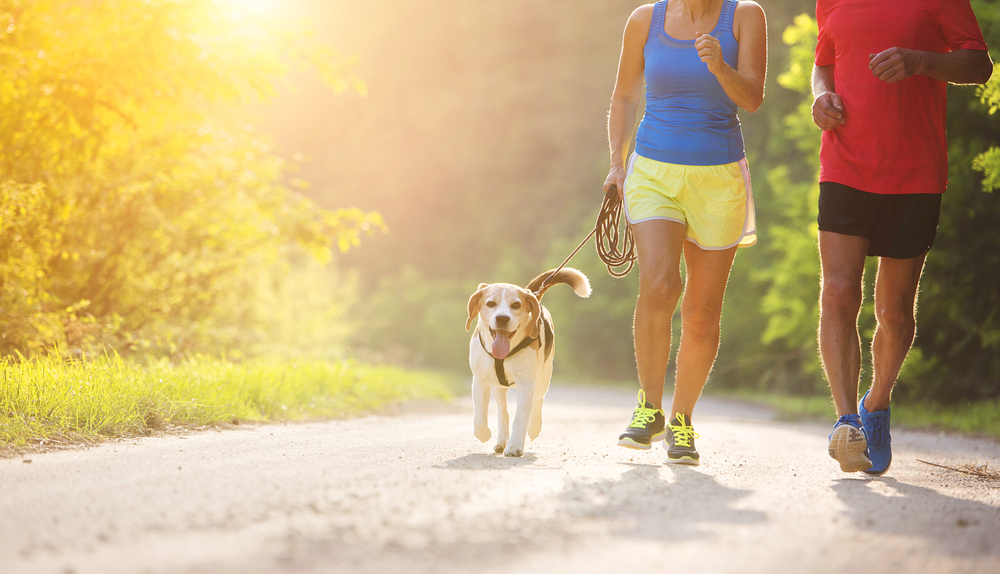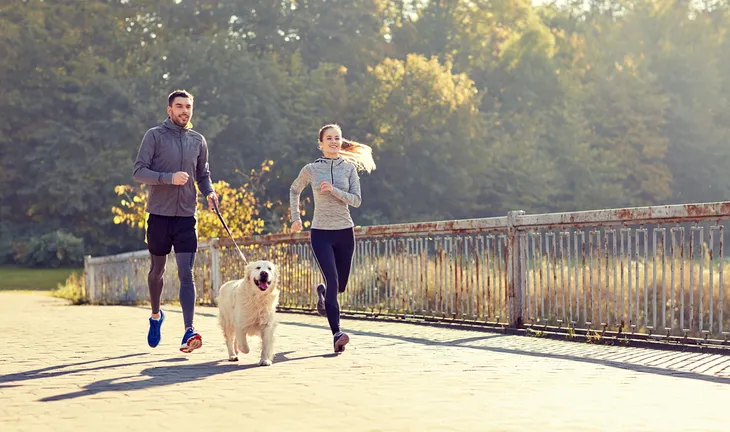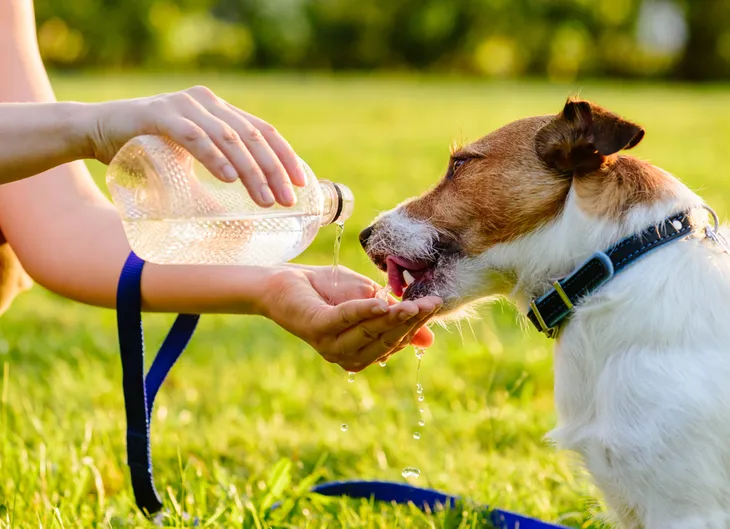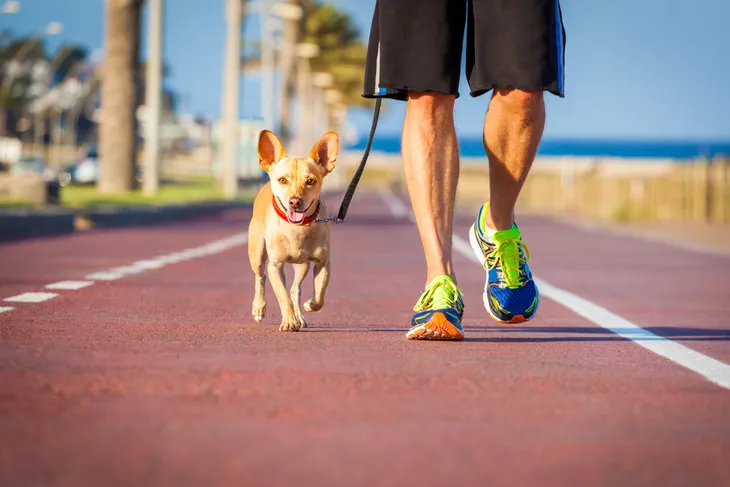Research tells us that working out with a buddy not only increases the incentive for exercise, but also keeps us accountable to our fitness goals. Whoever said that your partner in runs had to be two-legged instead of 4-legged?
Running with your most loyal friend is a great way to bond and get outdoors for some decent daily exercise to boot! Plus, Fido won’t likely complain the entire time about his or her spouse. Here are seven tips to keep in mind when taking your precious pooch along for a run…
On Leash
For the safety of your pet, you, and passersby, your dog should always be leashed when you’re running in a public space (i.e., parks, beaches, community trails). Not only will a leash ensure your dog doesn’t travel underfoot and trip you up during a run—it will also ensure your pet keeps pace with you and doesn’t wander off.
If you own a retractable leash, leave it at home or lock in the distance at roughly 6-feet so you don’t leave too much distance between you and your pet. Too much space could lead to your pet getting tangled under other people, kids, pets, and cyclists on route, which poses a safety hazard.
Focus on Hydration
It’s easy to get dehydrated on a long run, especially if on days when it’s particularly hot and humid outside. That’s why you should ensure you and your 4-legged running buddy stay properly hydrated before, during, and following your workouts.
If you run long distances with your dog, bring a water bottle along for the trek. This way you can prevent your pet from drinking from contaminated puddles and dirty lakes or ponds. Believe me, if he or she is thirsty enough, a dog will drink from almost anywhere and could get sick without a clean water source available.
Poop and Scoop
Despite the fact that you’re in the middle of a workout, you still have several responsibilities as a pet owner. One of your primary obligations is to follow “poop and scoop” regulations in accordance with your city laws (and in compliance with being a respectful human being).
Chances are, thanks to gravitational pull and when he or she last chowed down, that your canine pal might need to make a pit stop along your running route to do some business. That means you’ll need to carry the proper disposal materials (poo bags) along with you so you can do your “doodie” duty.
Start Slow
Dogs like humans can’t begin by running 10-miles right off the bat, especially if they’ve never run that distance before. After all, gyms have waivers for a reason and any qualified personal trainer will recommend you gradually increase your workouts as far as speed and distance rather to avoid an injury.
A dog, regardless of breed or size, which hasn’t run long distances before, needs to gradually get used to a new workout as well. Approaching a workout gradually will help your pet strengthen his or her joints, prevent sore muscles, and toughen up your pet’s paws, which can be pretty sensitive on tougher surfaces (i.e., asphalt or gravel).
Paw Care
As mentioned, your dog’s paws, like your feet, need to gradually warm up to running. Remember all of those blisters you got at first? Well, the sensitive pads on your dog’s feet are making direct contact with the running surface (i.e., sand, dirt, gravel, road salt, asphalt) and can even come into contact with glass and sharp road debris along route.
Do your dog a favor and make sure to clean and check his or her paws for signs of debris and injury following each and every run. Cleanse the paws with a gentle solution of soapy warm water and wipe clean with a soft rag to prevent any irritation or infection.
Look For Signs of Fatigue
Most dogs will just go with the flow, running along with you even if they are feeling tired. Sure, some pets may whimper or whine, but most of the time Fido will keep running along—happy to be with you—despite the need to take a breather.
So it’s up to you as a responsible dog owner to watch out for visible signs of fatigue in your dog. For instance, an overworked dog may pant heavily, slow down, foam at the mouth, or his or her eyes may glaze over. In these cases, stop and give Fido a much-needed break.
Get Vet Approval
If you started exercising later in life after never having run before, you probably sought out the thumbs up from your general practitioner, or at least a personal trailer, before lacing up your shoes. Fido’s health deserves the same consideration.
Book an appointment with your vet to get your dog a general check up before you begin any new fitness regimen. Your vet will double check that Fido’s joints, heart, lungs, and muscles are in proper shape for exercise and ensure he or she doesn’t have an underlying health issue that might worsen with running.










